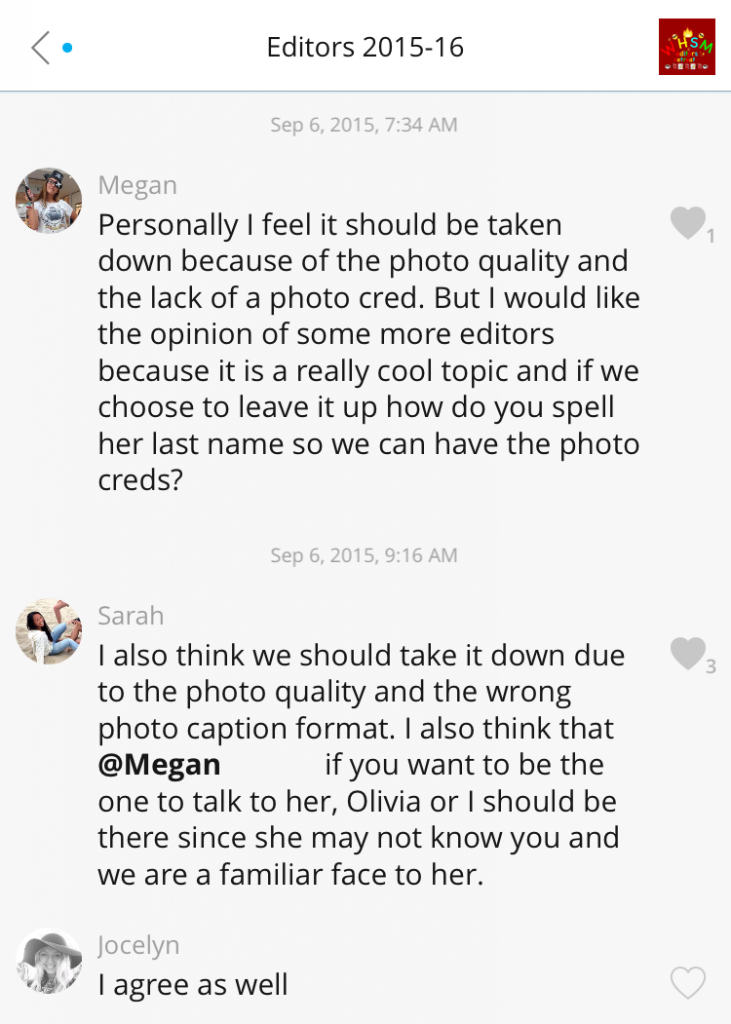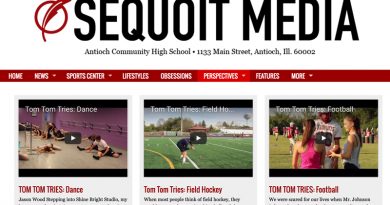Upping your Insta-game, Part 3: Management and evaluation
Creative angles, interesting stories, informative captions — great. Combined with some promotional efforts, this is one path to a huge Instagram following. Celebrate those milestones as you hit 1,000 followers, or whatever magic number, but keep in mind building an audience is just the first step.
With that comes the responsibility of posting on a regular basis. At this point, it can be helpful to implement some systems for deadlines, grading and peer- or self-assessment.
Challenge #1: How do you make sure to post new content on a regular basis?
Solution: Consider a Photographer of the Day (POD) schedule. Students select a number corresponding with a calendar date, and their job is to post that same date each month (for example, Sept. 4, Oct. 4, Nov. 4). Regardless of staff size, this type of schedule is simple, organized and perfect for grading or checking off, as it can be done once a month at the end. Make sure to discuss how you’ll handle weekends and school breaks.
For a smaller staff, or a group with only certain staffers posting, consider giving each photographer one week of the month to manage the account.
Another option is to align this to a beat system. The reporter assigned to the football beat, for example, posts to Instagram when a football-related photo opp occurs. The benefit to this structure is that the original reporter assigned to the beat maintains ownership of the coverage and handles it across all platforms. It guarantees balanced content but not posting predictability. It’s so flexible that a reporter could post daily about football — or almost never, making this method harder to manage. As a result, some staffs may choose to use a hybrid method, such as optional posting anytime related to spot news or beat reporting but required posting using the POD system.
Challenge #2: How do you avoid over-posting?
Solution: As part of the training process, students should learn to check the feed. After logging in to the shared account, but before posting, staffers can scan recent posts to see when the last photo posted and what it was about. This is especially important with breaking news and during special events such as homecoming, in order to make sure students don’t duplicate ideas or blow up the feed with 10 posts in one day.
On the same note, managing Instagram posts is like other aspects of student media — communication is essential. Brainstorming coverage in advance, working in teams, using tools like Trello, Slack, Google Drive or even a group messaging app like GroupMe can help students connect, share ideas and support each other before and after posting.
Challenge #3: Who evaluates posts, and when or how?
Solution: This depends on staff structure, of course, but it’s important for a social media editor, editor-in-chief or leadership team to monitor social accounts on an ongoing basis.
Create a checklist for what makes a good post or a “what to watch for” cheat sheet in terms of content, caption and format. Train editors about quality control and how to coach staff members about their work. Editors should develop as part of their social media manual a plan for taking down content — why, when, who and how. Make sure any deleted post leads to a conversation and teachable moment with a focus on ongoing learning.

As a staff, conduct critiques in class the same way you do for other media. Or schedule critiques as a bell-ringer activity or warm-up once each week or month. Editors can show recent posts using a projector and screen for a simple critique among staff members and as a way to showcase excellent work.
Providing feedback is essential, whether it comes formally with a grade or in another form. If students receive a monthly grade for their POD, teachers should create a rubric or establish clear expectations for how Instagram posts will be evaluated (possible criteria may include content, composition, caption and timeliness or ability to meet a deadline).
If part of each staff member’s experience is a weekly, monthly or quarterly reflection, include social media. Asking students to analyze their work holds them accountable and helps them make important connections to their learning.
On that note, if the idea of “what’s working, what isn’t” from last week piqued your interest, here’s another free tool: StatShot … And to stay on the front end of other social media developments, consider subscribing to this e-newsletter from Chris Snider, assistant professor of multimedia at Drake University.)
This is the final post of a three-part series. Be sure to check out Posts 1 and 2 and let us know what you think by commenting below.





